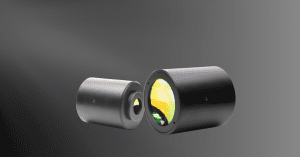Key Takeaways
- This article discusses an innovative F-theta lens design that incorporates a compensating element in front of the image to expand the field of view.
- The central focus of the project involves enhancing performance for low-energy laser applications through the utilization of a quartz design that capitalizes on the distinctive characteristics of the material.
- Through careful assembly, the F-theta lens ensures accurate spot convergence. Any testing hurdles are adeptly addressed through the implementation of compensatory measures and specific filters.
- There is a departure from tradition with the incorporation of a compensating element. The meticulous enhancements made to the design showcase a steadfast commitment to excellence in meeting customer demands.
Introduction
This article explores a groundbreaking F-theta lens design that diverges from conventional configurations by integrating a compensating element in front of the image to broaden the field of view. The primary objective of this project is to fulfill the unique requirements of the customer. Beginning with the initial version, we systematically refined and upgraded the lens to enhance its performance, particularly for laser applications.
Project Overview
The project’s core is optimizing performance for weak laser energy by implementing a quartz design that leverages the material’s unique attributes. It is important to note that our design differs from the conventional telecentric lens approach. We have clearly communicated this deviation to the customer, who has not expressed any objections.
Lens specification:
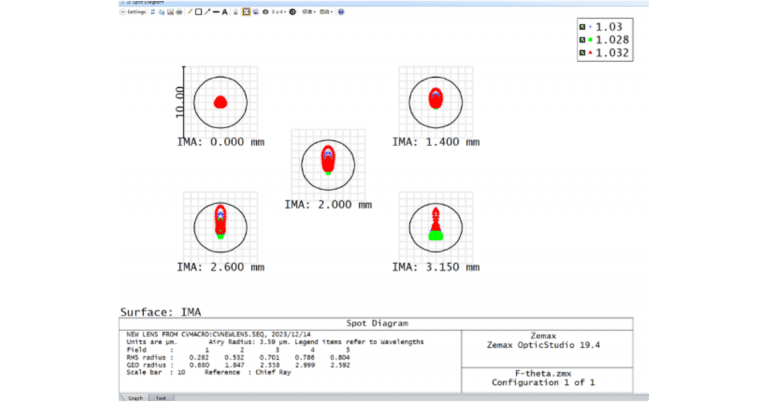
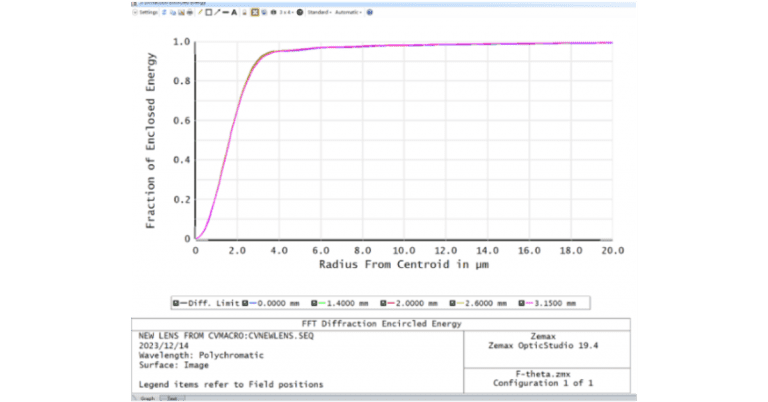
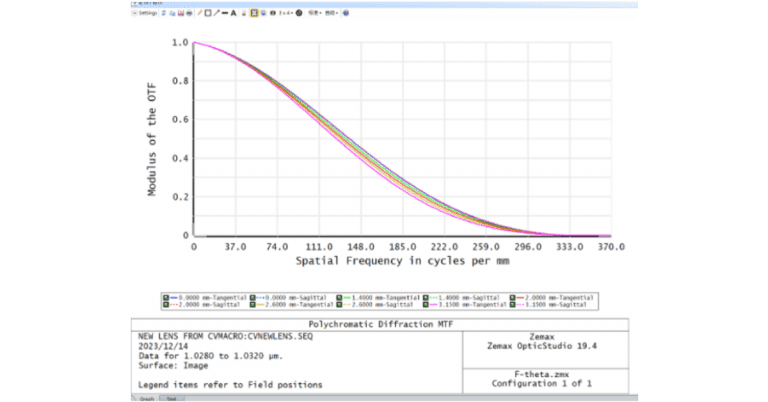
Project Design and Testing:
The customer’s specifications require precise working and flange distances for an F-theta lens, as shown in the structural diagram. To ensure optimal alignment during assembly, an essential lens base is used due to the lens’s unique design, which includes a large middle lens and two smaller side lenses. To meet the high performance standards of F-theta lenses, especially in approaching the diffraction limit, the third lens must be carefully adjusted during subsequent assembly stages. This meticulous approach ensures compliance with customer requirements and enhances overall performance, demonstrating our commitment to delivering high-quality F-theta lenses.
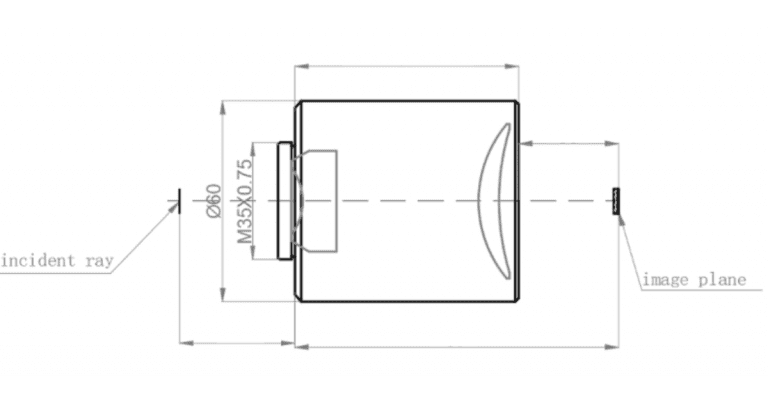
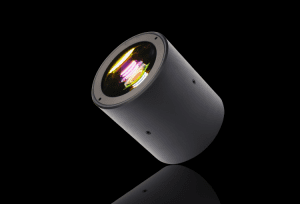
The main focus of the F-theta lens is to ensure that the spot size converges accurately on the image surface. To evaluate the quality of the spot, we must use the Modulation Transfer Function (MTF) as there is no specific measuring equipment available. To evaluate the quality of the spot, we must use the Modulation Transfer Function (MTF) as there is no specific measuring equipment available. This method is optimal and aligns with our company’s established measurement techniques.
It is important to note that the designed wavelength of the lens may exceed the existing equipment’s test range, which is limited to a maximum of 950nm. There are uncertainties about whether the current light source covers the 1050nm wavelength effectively for testing purposes. To address this, a compensatory measure involves post-focusing. Although this may have a minimal impact on results, it ensures compatibility with testing needs.
To facilitate comprehensive testing, the plan includes procuring 900nm and 1050nm filters. The existing 950nm filter is too broad for precise test requirements. This strategic approach accommodates the lens design and provides insights into our company’s equipment capabilities.
Our venture into F-theta lens innovation marks a transformative departure from traditional designs. We incorporated a strategically positioned compensating element to meet the customer’s demand for an expanded field of view. By enhancing the initial version meticulously, we demonstrate our commitment to optimizing laser application performance. We used a quartz design and deviated from conventional telecentric lens approaches, which were seamlessly communicated and accepted by the customer. The lens’s unique specifications, carefully assembled with an essential lens base, underscore our dedication to meeting stringent performance standards. Although evaluating spot quality presents challenges, shifting to the Modulation Transfer Function proves effective. This demonstrates our adaptability and commitment to excellence.
GREAT ARTICLE!
Share this article to gain insights from your connections!


